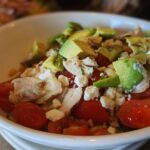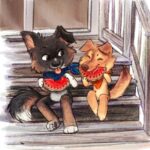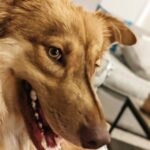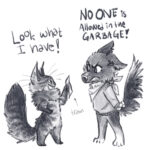A dummy is only required (or wanted) for an illustrated picture book submission where you are the author and the illustrator. If you are author-only, you submit text-only.
If you are a graphic novelist (and doing both the writing and illustrations) you would do a proposal in PDF form, which includes an overview of the project, a bio, a synopsis, sketches for a chunk of pages, and a few sample pages of full art, along with links to your portfolio, etc. If you are an author-only, you submit text-only.
If you are a writer, writing a MG or YA novel in which the illustrations are decorative (and you are not the illustrator) – such as LEVIATHAN or the Elf King books you describe – you query exactly like a regular novel, no difference whatsoever, except you say “I envision this to have illustrations, in the vein of LEVIATHAN or the Elf King books” etc. The publisher would hire the illustrator.
If you are an author-illustrator, writing a MG or YA novel in which the illustrations are decorative, query just like a regular novel, but link to your portfolio, and it’s fine if you also submit a PDF with some samples, and a few pages laid out with art, but not strictly necessary.
If you are a writer, writing a MG or YA novel in which the illustrations are hugely important (but you are not the illustrator) – like say you are writing a novel about a kid who draws cartoons and processes their emotions through cartoons, you query exactly like a regular novel, text-only, but you say in the query, “My novel is about a kid who draws cartoons which express their emotions, so portions of this ms are written in graphic novel format.” Then you describe the illustrations in the text, for example
paragraph of text
paragraph of text
[four graphic novel panels: panel one: thing that happens, panel two: response. panel three: whatever is next. panel four: you get the idea.]
paragraph of text
If you are an author-illustrator, writing a MG or YA novel in which the illustrations are hugely important, you’d query like a novel as in the above, but also make a PDF like the graphic novelist one.
If you are an author-illustrator, writing a MG or YA novel in which the illustrations are decorative, query just like a regular novel, but link to your portfolio, and it’s fine if you also submit a PDF with some samples, and a few pages laid out with art, but not strictly necessary.
If you are an author-illustrator, writing a MG or YA novel in which the illustrations are hugely important, you’d query like a novel but also make a PDF like the graphic novelist one.

Weasel fans, we need your help!
My good friend @denkidraws has a kickstarter going for her ultra cute fairy plushies, and though it has been funded, it’s still a little bit away from unlocking all of the design. This ermoth is one of them, and I LOVE IT SO MUCH… please take a look and back this project up if you can! They’re adorable and super high quality!
GET!
.
.
.
#dogsofinstagram #bordercollie
https://www.instagram.com/p/CfCztWfpZCf/?igshid=NGJjMDIxMWI=
Panera Bread! #food (at Rehoboth Beach, Delaware)
https://www.instagram.com/p/Ce9q6R0ud_b/?igshid=NGJjMDIxMWI=
Mane Cut- finished pony in #procreate
https://www.instagram.com/p/Ce0JjBXOLJc/?igshid=NGJjMDIxMWI=
I gave my pupkids some watermelon the other day
.
.
.
#dogart #bordercollie #cute #animalart
https://www.instagram.com/p/CerRy1nuEOl/?igshid=NGJjMDIxMWI=
Is this dog even real omg #nico #dogsofinstagram #dog
https://www.instagram.com/p/CefALTMNdRN/?igshid=NGJjMDIxMWI=




I had to draw them.
Does an author-illustrator “portfolio” need to feature illustrations that were published in day journals/magazines and stuff like that or can they just be original works of art that they created and included on a website? (i.e. Does the portfolio have to be anything beyond samples of how that illustrator’s work looks or is prior illustration pub credits necessary?)
Your portfolio certainly CAN include published images, but it doesn’t need to. (After all – lots of people don’t HAVE published images!)
I wrote a long-ago post on the old blog about what to include in a children’s book illustration portfolio but I’m going to re-post it here so that I can include it in the FAQ.
Q: WHAT makes a good portfolio for an aspiring children’s book illustrator?
First of all, you should be showcasing the type of work you want to do. If you WANT to draw darling baby board books, but your entire portfolio is dark horror imagery – there’s a disconnect. You are never going to get that board book gig. I know this sounds obvious, but I see folks all the time who are SAYING “oh I want to do graphic novels” (or whatever) but there is no paneled work or anything in a graphic novel style on their website! This is a showcase of your work so that people can potentially PAY YOU to do it. So show off! Lean into your strengths and interests and the kind of work you want to do in both style and content.
Remember, there is a big difference between picture book illustration work and editorial work. You are not drawing posters or advertisements or abstract expressionism or whatever over here, you are trying to tell a story over 32 or more pages. It has to be attractive and have a sense of whimsy, sure, but it also has to be kid-friendly and coherent. With that in mind, you should make sure your children’s illustration portfolio includes the following:
* Children – Kids playing, kids fighting, kids mad, kids glad, cute kids, silly kids, bashful kids, wistful kids, whatever. Kids being as kid-like as possible. IF you can’t draw good kids, you are probably in the wrong line of work.
* Animals – Bunnies, bears, moles, frogs, cats and dogs are often the subjects of children’s books. You might consider small spot illustrations of a number of different creatures, or a larger scene with several included. If I were making a portfolio, I’d do some animals in a “natural” way (deer in a field), and some in a “personified” way (ie, a badger going to school, or a porcupine drinking tea.) ETA: Yes, you can also include fantasy animals / monsters or similar, if that suits your style. I am not suggesting that everyone try and draw like Wind in the Willows. 🙂
* Movement – Dancing, swinging, playground games – nothing is worse than “static” looking pictures. Even a simple portrait should have some movement – a leaf skittering by, a swing in the hair, gleam in the eye and sass in the way the subject is posed. You get the idea.
* B&W sketches as well as color paintings, because you might be able to do B&W interior art for chapter books in addition to picture books.
* Character Transitions In other words, multiple images that are part of a set with the same character doing different things.
* Actual Spreads If you haven’t actually illustrated any children’s books, you might consider doing a scene or two from a famous old fairy tale, so people can see how you think about telling the story visually over several spreads. If you are into graphic novels, some paneled pages would be nice..
Again, a picture book isn’t just 32 snapshots of random pretty images. Art directors and editors need to be able to tell that you can tell a whole story with no words, and follow a character and narrative thread through from the beginning of a book to the end.
border collies are big rule followers (and enforcers)
cats only have one rule: NO RULES
–
text transcription-
- truffle: LoOk what I have!
- ringo: NO ONE is allowed in the GARBAGE!
- with a small arrow pointing to a wrapper that says “trash”





